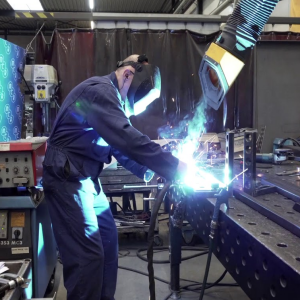It’s just a capture device that collects contaminated air containing solder flux fume and a fan which forces the air through a filter to remove the contaminate.
Solders can contain various levels of zinc, arsenic, cadmium, antimony and other metals. Metals of which solder is made do not however vaporise at soldering temperatures. What’s needed to be extracted are the noxious fumes produced by organic activators found in flux smoke.
Prolonged breathing of these fumes can cause short & long term illnesses, the most common of which are respiratory tract irritation, sore throats, eye irritation and headaches. Allergies and asthma are often exacerbated by solder flux fumes.
Lots of industries including electronics, pharmaceutical, medical, laboratories, clean rooms, jewellery, art & craft and beauty salons, even modern offices incorporate equipment with high filtration efficiencies.
HEPA (high efficiency particulate arresting) filters have efficiencies of more than 95% (EU10 grade) to more than 99.99% (EU13 grade).
Fine Particle filters have efficiencies of more than 80% (EU7 grade) to up to 95% (EU9 grade).
The back and forth folds in the filter paper together with the paper separators increase the surface area in the airflow and therefore the efficiency of the filter.
The filter paper is made from a maze of interlocking fibres; the airflow has to find a route through this maze. There are various ways the filter traps particles including:
-
- Large particles run into fibres & get caught.
- Smaller particles that try to slide between fibres a diameter apart get caught.
- Very small particles that collide with other molecules slow down and slide by fibres and get caught.
Not always. Poorly sealed systems will have gaps that allow the contaminated air to simply pass around the filter. Although the filter paper itself should be completely sealed into its housing with hot melt and allow only 1% of particulate to pass through, a whole lot bigger % will pass the foam seal around the outside of the filter, please be aware of this as most system manufacturers compensate for this fact by declaring a filter efficiency, not system efficiency.
No, these are molecular substances that will pass through the filter. A typical filter will also incorporate some level of activated carbon based material to adsorb these gases.


